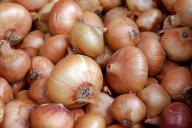Engaging in physical fitness activities since childhood is linked to changes in the brain's grey matter volume during adolescence, says a recent study.
The experiment reveals that young adults who demonstrated better neuromuscular fitness – being stronger, faster, and more agile – had larger grey matter volume in a specific cerebellar region known as Crus I.
Let's find out more about it.

How it was discovered
Despite the cerebellum's role in cognition and learning, the relationship between physical fitness and cerebellar volume during adolescence was not well-understood before this study.
Interestingly, individuals with better cardiorespiratory fitness exhibited smaller overall cerebellar grey matter volume.
Moreover, the experiment uncovered a unique correlation in males, revealing that enhanced neuromuscular fitness from childhood was linked to a reduction in grey matter volume specifically in the Crus II region of the cerebellum.
The experiment encompassed 40 people with an average age of 18 years, adding a nuanced perspective to our understanding.
The assessment methods were diverse, encompassing evaluations of cardiorespiratory fitness, muscular strength, speed-agility, coordination, and neuromuscular fitness.
Additionally, magnetic resonance imaging was employed to meticulously assess cerebellar volumes, contributing to a comprehensive analysis of the participants' brain structures.
Why it's important
The findings underscore the importance of physical activity during childhood and adolescence for enhanced physical fitness, potentially influencing cerebellar volumes associated with cognitive functions.
However, the discoveries also reveal some contradictory associations, highlighting the need for further research to gain a deeper understanding of the intricate connections between physical fitness and cerebellar volumes in adolescents.
Previously, we talked about misinformation.












